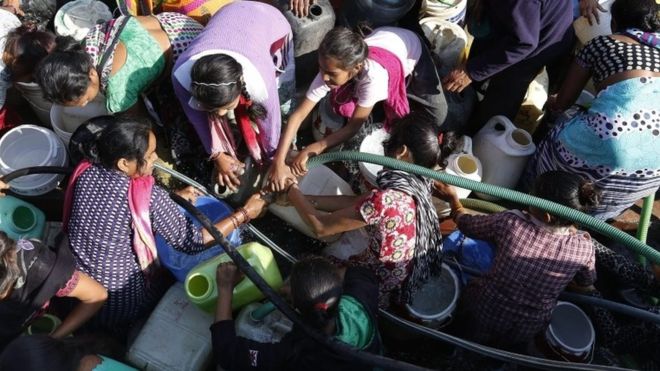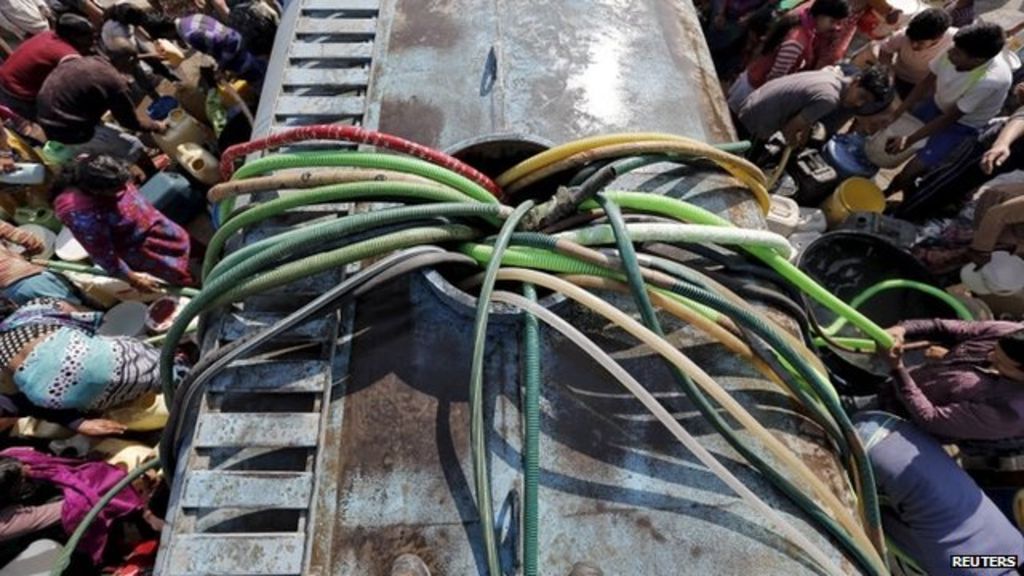India caste unrest: Water supply ‘partially restored’ in Delhi

Water supply has been partially restored in the Indian capital, Delhi, where up to 10 million were affected after protesters sabotaged a key canal.
The army took control of the Munak canal in neighbouring Haryana state on Monday after Jat community protesters, angry at caste job quotas, seized it.
Delhi Water Minister Kapil Mishra said the "crisis was still not over" and urged people to use water carefully.
The city's schools, which were closed because of the crisis, have reopened.
Sixteen million people live in Delhi, and around three-fifths of the city's water is supplied by the Munak canal, which runs through Haryana.
Mr Mishra tweeted on Tuesday morning that "some water has been released" from the canal. This had led to the restoration of partial supplies in north and central Delhi, he said.
He said more than 70 water tankers from these areas had been moved to the western part of the city, where partial supplies would be "hopefully" restored by Tuesday evening.
"The supply will be limited till the time the Munak [canal] is totally repaired. The crisis is not yet over. People should use water carefully," he said.
Severe shortage
It is not clear how many households are still without water.
Prior warnings meant that people had managed to save water, and tankers had been despatched to affected areas of the city, but that this has not been enough to make up for the shortfall.
"My son works as a manager in a hotel so he leaves an hour early to take bath in his office," Nikhat Parveen told Hindustan Times newspaper.
"For cooking and drinking purposes, I am buying packed water bottles."
Vinod Kumar Sharma told the newspaper that his family rented a hotel room to bathe after going without a bath for two days.
The army took control of parts of the canal on Monday morning, but repairs are expected to take time. Eighteen people have been killed and hundreds injured in three days of riots.
Protesters went on the rampage despite a curfew and the deployment of the army, which is reported to have opened fire on them, in the districts of Rohtak and Jhajjar.
Why are the Jats angry?
The land-owning Jat community is relatively affluent and has traditionally been seen as upper caste.
They are mainly based in Haryana and seven other states in northern India.
Comprising 27% of the voters in Haryana and dominating a third of the 90 state assembly seats, they are a politically influential community. Seven of the 10 chief ministers in Haryana have been Jats.
The Jats are currently listed as upper caste but the demonstrators have been demanding inclusion in caste quotas for jobs and education opportunities that have been available to lower castes since 1991.
In March 2014 the Congress-led national government said it would re-categorise Jats as Other Backward Castes (OBC), opening the way to government job quotas.
But India's Supreme Court ruled in 2015 that the Jats were not a backward community.
As jobs have dried up in the private sector and farming incomes have declined, the community has demanded the reinstatement of their backward caste status to enable them to secure government jobs.
Политика конфиденциальности | Правила пользования сайтом












